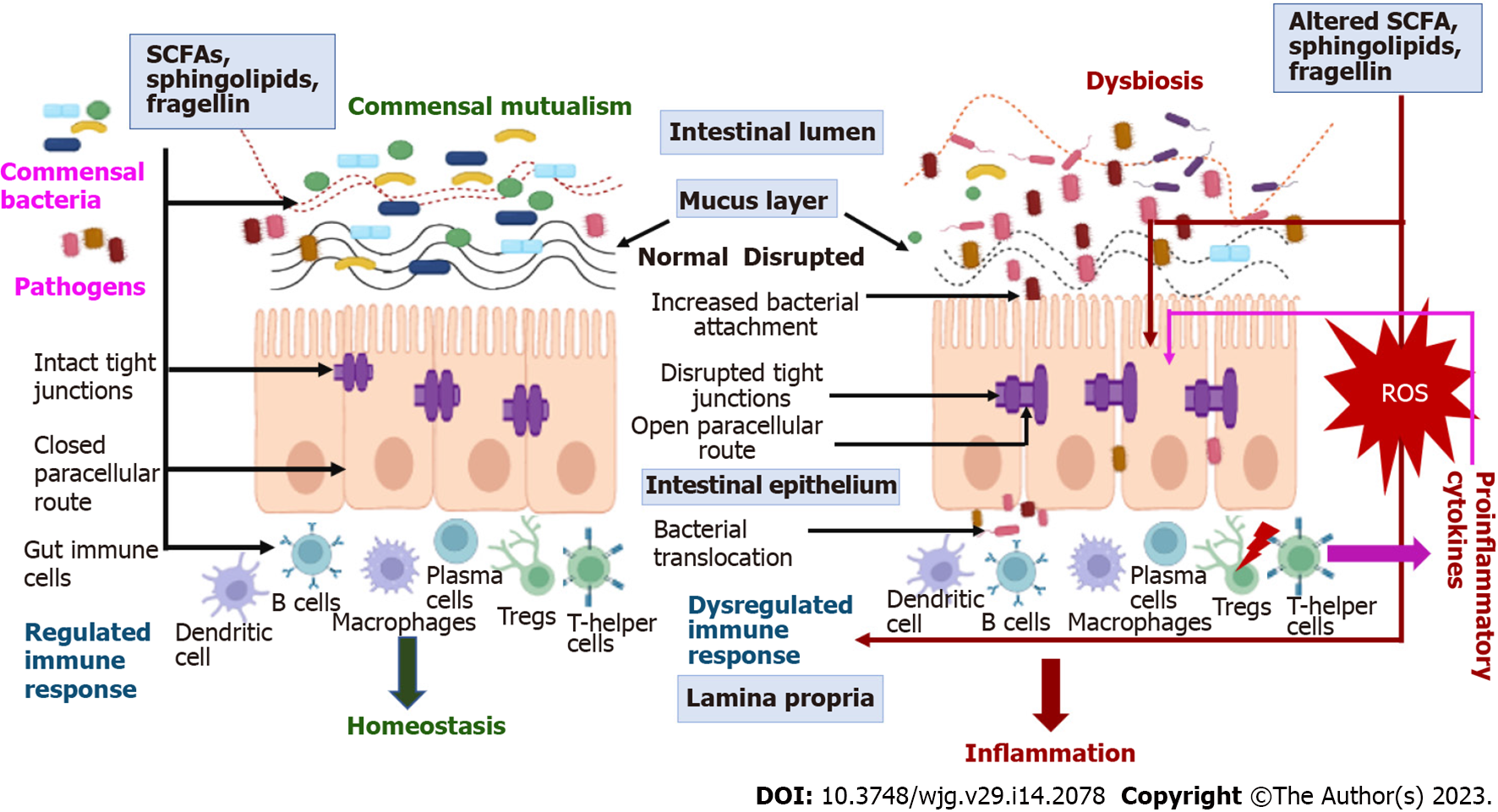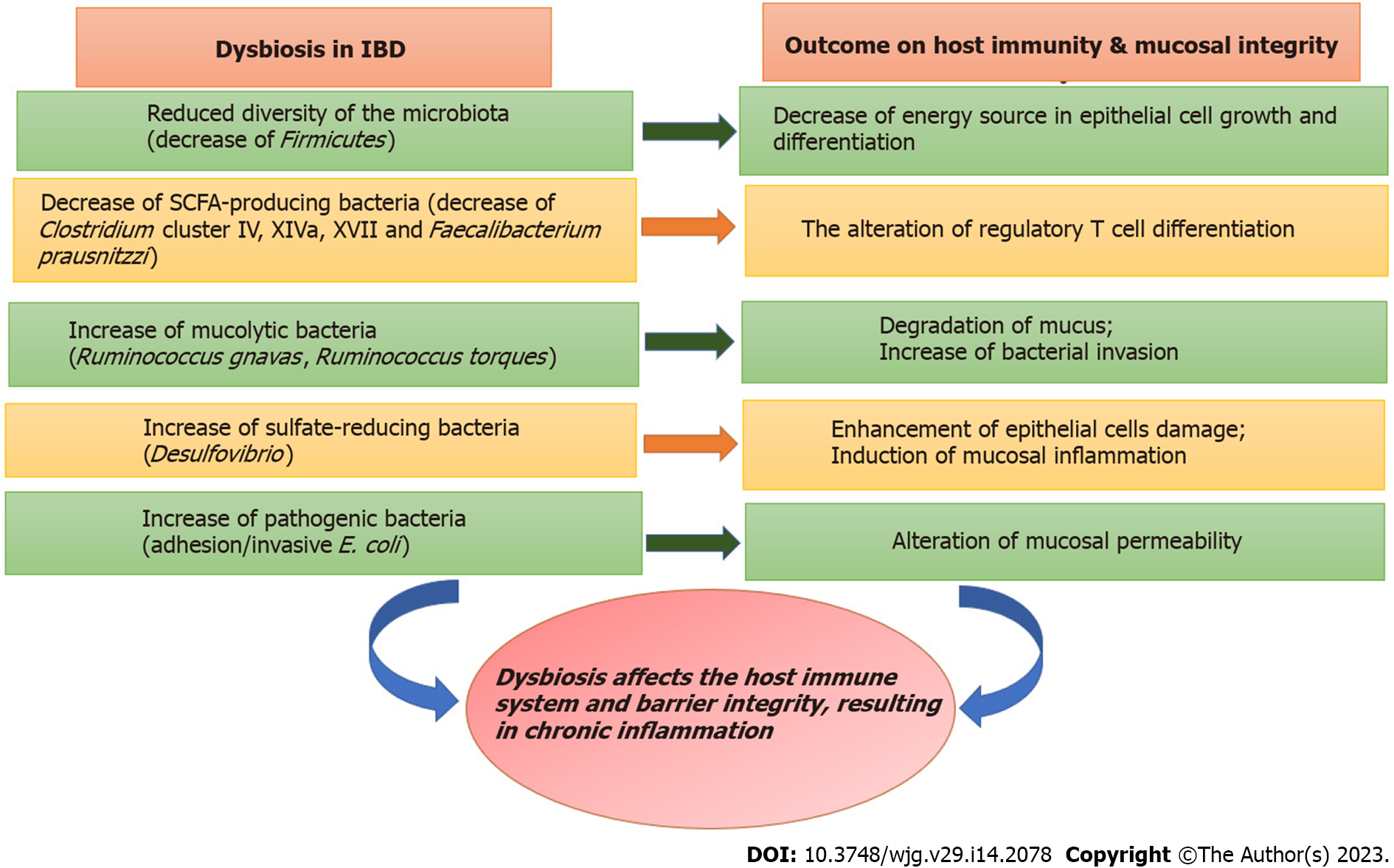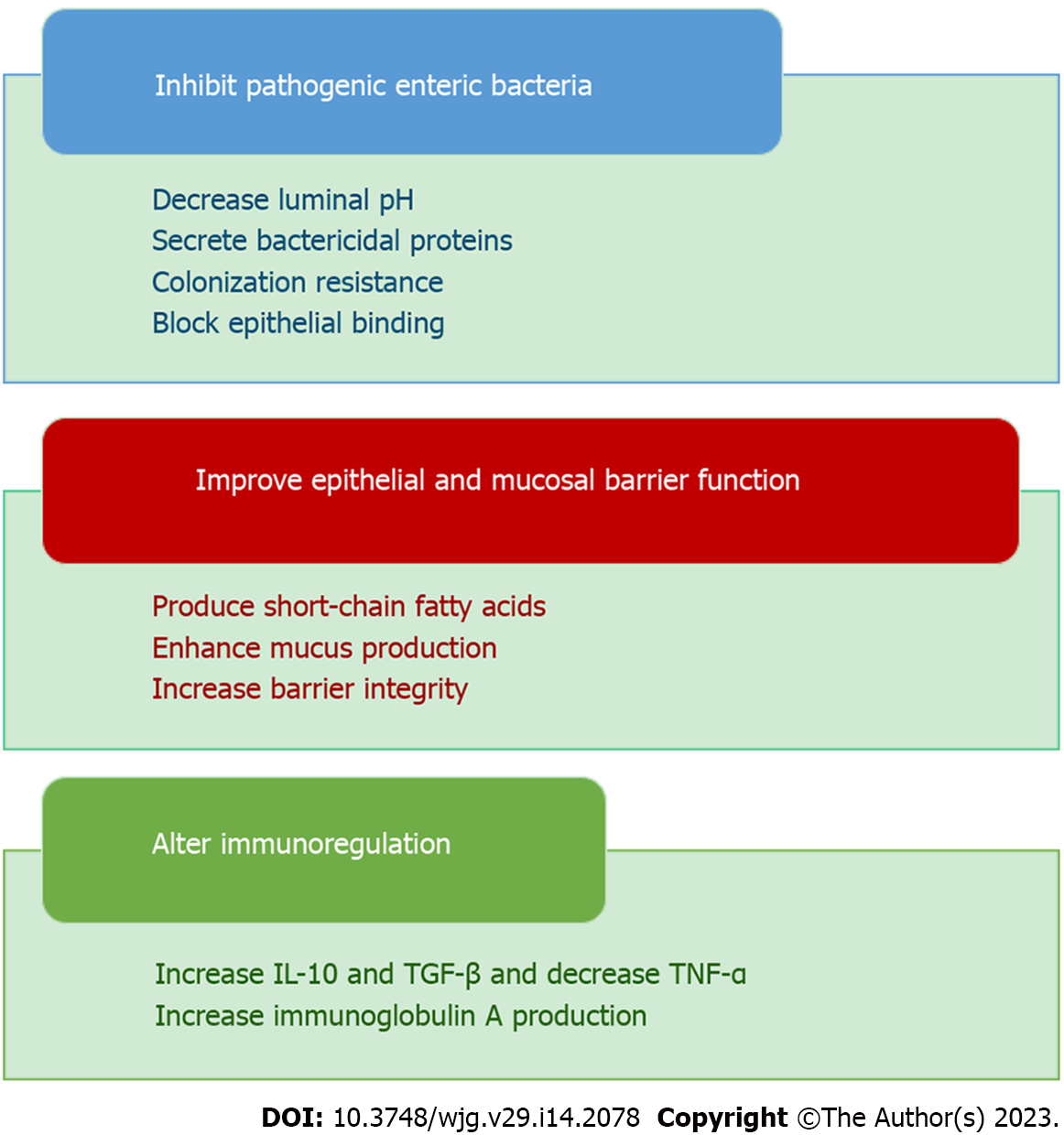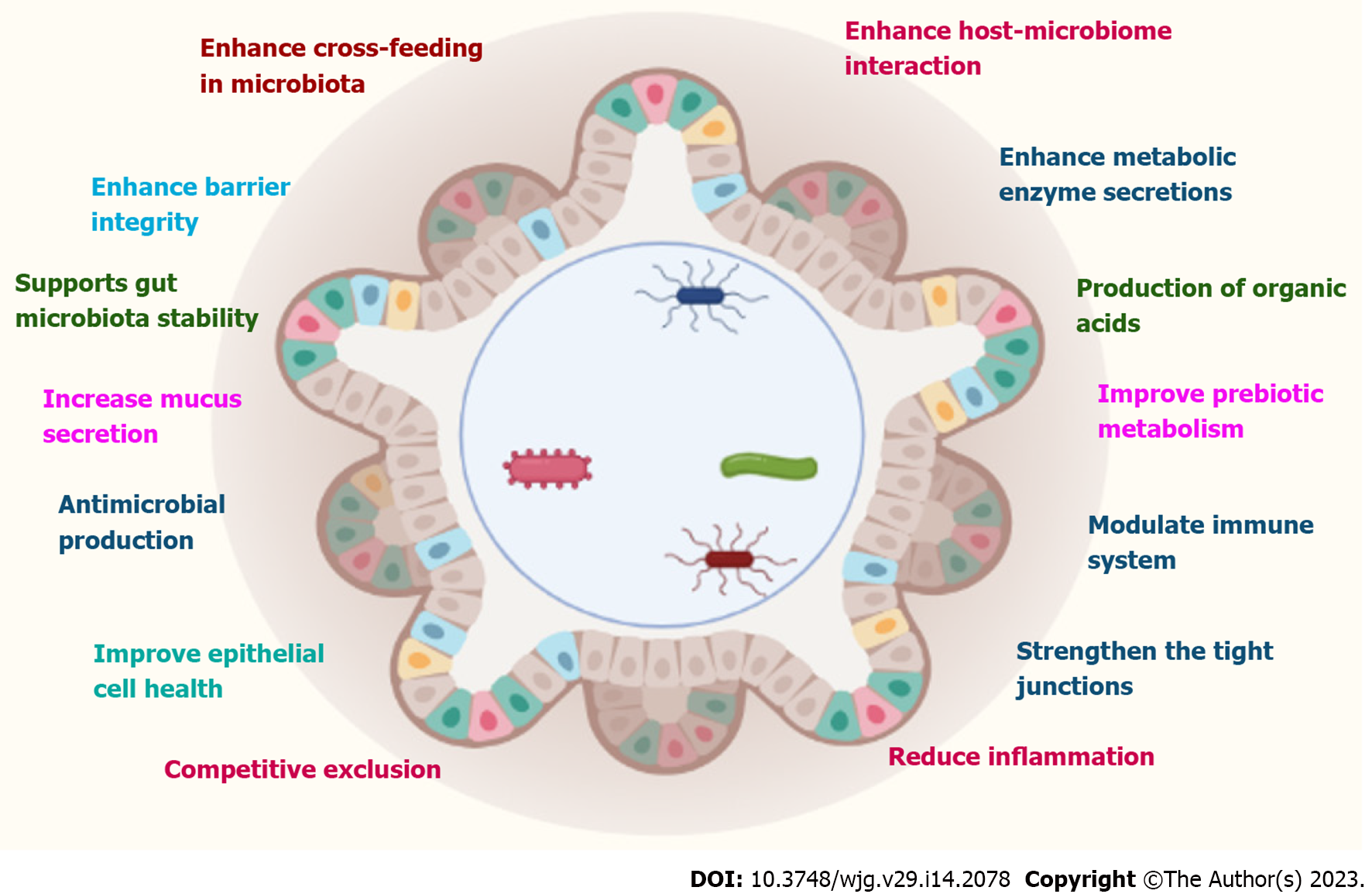Copyright
©The Author(s) 2023.
World J Gastroenterol. Apr 14, 2023; 29(14): 2078-2100
Published online Apr 14, 2023. doi: 10.3748/wjg.v29.i14.2078
Published online Apr 14, 2023. doi: 10.3748/wjg.v29.i14.2078
Figure 1 Comparison between normal microbiome and dysbiosis.
Figure 2 Role of dysbiosis in inflammatory bowel disease pathophysiology.
SCFA: Short chain fatty acids; Tregs: Regulatory T cells; ROS: Reactive oxygen species.
Figure 3 Dysbiosis in inflammatory bowel disease and its pathological outcomes.
IBD: Inflammatory bowel disease; SCFA: Short chain fatty acids.
Figure 4 Various actions of probiotics.
IL-10: Interleukin-10; TGF-β: Transforming growth factor-β; TNF-α: Tumor necrosis factor-alpha.
Figure 5 The mechanism of actions of probiotics in combating inflammatory bowel disease symptoms.
IBD: Inflammatory bowel disease.
Figure 6 Mechanisms of action of probiotics, prebiotics, and synbiotics.
SCFA: Short chain fatty acids; IBD: Inflammatory bowel disease.
- Citation: Roy S, Dhaneshwar S. Role of prebiotics, probiotics, and synbiotics in management of inflammatory bowel disease: Current perspectives. World J Gastroenterol 2023; 29(14): 2078-2100
- URL: https://www.wjgnet.com/1007-9327/full/v29/i14/2078.htm
- DOI: https://dx.doi.org/10.3748/wjg.v29.i14.2078














